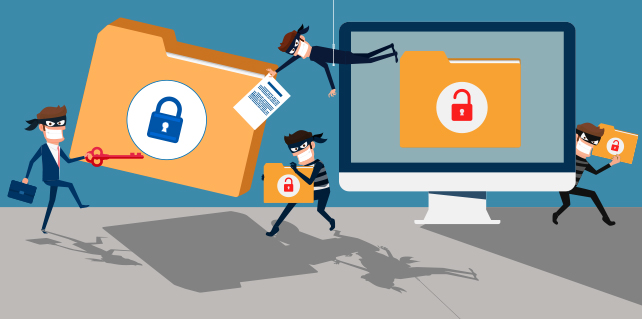Every day, malicious attackers work to find vulnerabilities they can use to steal, monitor, and siphon information from organizations. The data they want varies: patient health records, cardholder credentials, personal identifiers, and government secrets are all widely prized and eagerly sold on the dark web to the highest bidder.
IT and cybersecurity teams have the difficult job of thwarting these attacks. It’s an initiative that never ends, and they’re a quiet type of superhero that watches over the safety of our information and business data while the rest of us go about our day.
While we will likely be locked in an eternal struggle with cyberthreats (as long as there’s data to steal, there will be people to steal it), that doesn’t mean we can’t use tools and solutions (like Tony Stark’s Iron Man suit) to make the fight easier. Here are five strategies you can use in your organization, starting today, to improve your superhero strategies and protect the integrity of your files and file transfers.
1. Use Multi-Factor Authentication (MFA)
Most organizations know what multi-factor authentication (MFA) is, but many of them don’t require MFA enablement across customer and internal accounts. Some don’t even require password updates (though whether this really helps secure users from hacking is under debate by industry professionals).
A Brazil bank suffered a massive data breach in 2016 when its online banking information was rerouted to fake servers during a cyber attack. They weren’t using multi-factor authentication. In a report on the incident, Payments Source wrote that “a simple one-time password or push authentication would have alerted DNS administrators to [the breach] before the hackers were able to take control of all of the systems.”
Passwords are no longer able to protect critical data on their own. To defend yourself against data breaches, enable MFA across all company accounts and make its use mandatory. This type of authentication will ensure your data is much harder to hack.
2. Secure Data with a Managed File Transfer Solution
Most data security standards require organizations to use strong industry practices, like cryptography and encryption protocols, to secure personal data whenever it’s in transit over public networks. When files aren’t encrypted, you not only risk severe fines and penalties, you risk losing critical information that may not be recoverable after an attack.
Just last year, Scottrade Bank was exposed to a data breach that impacted over 20,000 customers’ data. The database that contained this information wasn’t encrypted and exposed social security numbers, full names, addresses, and even employee information.
All of this, including the consequences, could’ve been prevented using basic encryption and a strong cybersecurity strategy. For example, every file, folder, and database on public and private networks should be protected with protocols like AES and OpenPGP (for data at rest) and SFTP, FTPS, AS2, and HTTPS (for data in transit).
Managed file transfer (MFT) is a great solution for encryption and automation needs. A product like GoAnywhere MFT will help prevent successful cyber attacks by providing these benefits (and much more):
- Secure connections for the transmission of data
- Role-based security and user authentication
- Workflows that can be automated and scheduled
- Secure folders, mail, and forms to protect your assets
3. Implement an Employee Education Program
Meticulously-created phishing emails are frequently used to infiltrate a company’s sensitive information. The fact that this method of hacking succeeds so often is troubling to say the least; the financial stakes are far too high, with the global cost of a data breach averaging over $3 million, for a malicious email to cause data breaches for organizations and pain for unsuspecting users.
Thankfully, with training, falling victim to a phishing email is entirely preventable. Despite how real they can look, knowing the signs of a scam and how to deal with them can help employees spot one from far away—and keep your data safe.
Make cybersecurity training an initiative. Strategize and outline an employee education program, then implement it starting from the first day of employment. Require annual training sessions (even if it’s just a ten-minute reminder at a company meeting) to keep everyone in your organization on the same page, but make it fun. The more employees feel empowered and included in the success of the organization, the better they’re likely to follow security measures at home and in the workplace.
4. Run a Risk Assessment to Find (and Fix) Your Weaknesses
Data breach statistics are higher than any other time in history. IT teams need to take a long, hard look at their business to ensure there are no vulnerabilities a hacker can use to get inside their private network. Systems, servers, workstations, network devices (like fax machines and mobile tablets), and even third party vendors could be creating gaps in an organization’s cybersecurity defenses.
To combat potential weaknesses, it’s a good idea to complete frequent risk assessments. Most organizations already need to do this to be compliant with state and federal regulations, but it doesn’t hurt to look at how often you complete them and determine if those assessments could be done more frequently, especially when adding new vendors, business locations, software, or devices.
Need help streamlining these assessments? A good solution, like managed file transfer, can track and audit file transfer activity, secure your files, provide key and certificate management, and run reports on important system information. An even better solution will do all that—and help you meet compliance requirements in a variety of ways.
Don’t be the next victim of a data breach. With these four methods of protecting your files, you can start protecting your organization—and the sensitive information entrusted to it.
Source: HelpSystems


